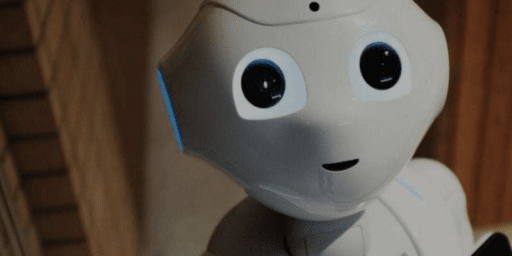Canadian Value Stocks – Top 10 Picks 2026
Finding the best value stocks in Canada isn’t an easy task. The truth is that the criteria for what makes an excellent value stock is a bit nebulous, and not as easy to define as when value stock Godfather Ben Graham was writing his treatise on investing.
This is the second article in our Million Dollar Journey fundamentals journey. With our fundamentals series, we intend to give you a breakdown of somewhat complex topics in the hopes that you can make informed decisions about your investment portfolio going forward.
Previously, we touched on how to buy and sell stocks in Canada, what stocks are and why you should care. After that article, several readers wrote in asking questions like: “What strategies should I use to choose the right stock?”, “How do you choose a good stock from bad ones?” as well as “Growth or Value?” and finally, “What are the best value stocks in Canada?”
Editor’s Note: If you’ve already done some value-related equity reading, you can skip straight to our list of the best value stocks in Canada or check out the most popular article on our website: Canada’s best dividend stocks.
What is Value Investing?
There are many ways to describe value investing. Still, I will attempt to do so with a simple statement (followed by a more substantive explanation).
In the simplest sense, value investing is investing in stocks that are at a discount.
You buy stocks when they are worth less than they should be.
That’s it.
You go to the stock store, look for the beat-up soup cans of the world of the stock, and then buy them at a steep discount.
Now go fire up your online broker account and get rich.
But… it turns out that it’s a bit harder than looking at a soup can when it comes to identifying if a stock deserves its discount.
To help illustrate this point, imagine the following scenario:
- Imagine your favourite tub of ice cream – say rocky road, is about $7 at the local grocery
- Now imagine that you can break down the price of this tub of ice cream into all its parts, such as how it’s made and how it got to you. Say this includes:
- the cost of the cream, sugar, chocolate, and all the other ingredients
- the packaging and labour; and
- shipping
- And now let’s say, after adding up all the components of the ice cream – it comes out to about $6.50
- This means the profit (or the markup as they call it) that the producer of the ice cream and grocery store can make is only $0.50.
- Let’s further assume that this $0.50 is split evenly between the grocer and the producer. And let’s also assume that this profit is a fair one, allowing the producer and the grocery to make a living and maintain their business.
Now, you might think – hey – it costs $6.50 to make that ice cream from scratch, and I’m only paying a $0.50 premium to the ice cream company and the grocery? That’s not bad… it even seems fair. Let’s call this scenario “fair value” – as in you’re paying a fair value for the price of the ice cream (and it’s delicious).
Now, let’s say it’s the middle of the summer. The price of the same ice cream hits $10.
You know it only costs $6.50 to make that ice cream. The producer typically doesn’t change their markup/profit (assume it’s still $0.25), so this means that the grocery stock has marked the price up by $3.25. Some people might buy it still – but to most people – this ice cream is clearly overpriced now. Let’s call this scenario “overvalued” – as you are paying way over the value of the ice cream – almost a 50% premium in fact.
Finally, let’s imagine it’s now the middle of winter. The groceries have an overstock ice cream and have currently listed the ice cream at a sale price of $6.80.
Let’s continue to assume that the producer still hasn’t changed their markup/profit (again, still $0.25). This means, for every tub of ice cream sold, the grocery is only making $0.05. Clearly, they aren’t worried about profit here and want to sell the ice cream quite badly. So you buy 2 or 3 tubs (the obvious and correct choice!). This scenario is naturally called “undervalued.” You are paying very close to the value of the ice cream and below the value of what would be considered fair since the grocery is probably not making enough money to sustain the business.
An even better scenario would be that if ice cream tastes suddenly changed. This particular ice cream was no longer part of the ice cream trend. In this situation, the grocery store continues to lose money the less popular it gets since it takes up valuable retail space. In this situation, you could purchase a lot of your favourite treats for less than the cost of what it takes to produce it!
How does the example above relate to value investing?
By investing in a company that is undervalued, you are giving yourself what the grandfather of value investing Benjamin Graham calls a “margin of safety.” A margin of safety is the protection and security from adverse effects in a downturn (e.g. bear) market because you’re likely paying less than what the company’s parts add up to.
The Quick History of Value Investing
The term and strategy of value investing were first widely proposed and popularized by this man – Benjamin Graham. Graham’s work and career as a teacher at Columbia would influence some of the greatest investors known and living today. His pupils include Irving Kahn, Charles Brandes, and Warren Buffet, the legendary investor himself. In fact, Warren has said that Graham’s influence on him has been second to only his own father.
In Graham’s magnum opus, “The Intelligent Investor,” he laid rules and “tests” that can give you insight into whether a particular company is overvalued or undervalued. These rules have consistently withstood the test of time and are still widely used today as the basis for the valuation of companies.
There are a number of rules in Graham’s book, but in today’s article, we will focus on a couple of simple rules anyone can use, what they mean, and how to find the data.
Why and How Does Value Investing Work?
Before we into picking the best value stocks in Canada, we should really familiarize ourselves with the concept of “Efficient Market Theory” – or EMT.
All stocking picking strategies (including the never-ending growth stocks vs value stocks debate) eventually have to benchmark themselves against EMT.
Efficient Market Theory
In a nutshell, the market – any market: stock markets, farmers markets, supermarkets – is efficient. Things are priced relatively, and using all the available information to sellers and buyers, prices will go up or down depending on what value people place on the item relative to the price.
What do I mean by that? Well, let’s go back to our ice cream example.
Say a tub of ice cream is overpriced at Supermarket A (say $10). Some people will buy it – they simply want the ice cream, value it highly, and don’t want to do any comparison shopping or think about it.
But when the information gets out that every other shop, including Supermarket B, is selling ice cream way cheaper, customers will likely stop buying the overpriced ice cream. The supermarket will then adjust the price back to normal because it doesn’t want to get stuck with a massive stockpile of ice cream. This is an example of an efficient market forcing the price of overpriced ice cream back to normal. And in the stock market, the same thing happens.
Now let’s say ice cream is underpriced at Supermarket B (say $6). This supermarket is not advertising it and is doing this spontaneously because they just want to get rid of the ice cream before it gets anywhere near the expiration date. People start buying this ice cream.
Lots of it.
Then they tell their friends and family.
Soon enough, word gets around, and others start flocking to the supermarket to buy this ice cream as well. Well – the supermarket (if they were smart) would see this as an opportunity and might raise the price of the ice cream back to normal – and can do so because they didn’t advertise or promise anyone that it would be at that price for a set period.
Now some people might say “forget about it” and not buy the ice cream anymore, but a good amount of people will. In the end, the market forced the supermarket to raise the price because it was in the supermarket’s best interest. This is an example of an efficient market causing the price of undervalued ice cream back to normal. And again, the same thing happens in the stock market.
Efficient Market Theory and Margin of Safety
So with that said, let’s tie efficient markets and margin of safety together and look at this in two major scenarios.
1) When the stock market is on a downward trend (a bear market)
2) When the stock market is on an upward trend (a bull market).
In a bear market (downward trending market), the market value of overvalued companies (priced more than they are really supposed to be worth) typically falls much steeper than those that are reasonably valued.
On the other hand, undervalued companies typically don’t change all that much in a downward market, and in some cases, may even go up. This happens because the financial information about a company – its economic health and its potential to make money now and in the future, is public. When enough people get wind that a company is “on-sale” relative to its actual value (i.e. profits that it can generate now and the future), it doesn’t take long for that information to spread. Soon a lot of people are trying to get a piece of that company.
In a bull market (upward trending market), investing in an undervalued company is just good business sense. The market is trending upwards, every investor is in a buying mood, which in turn increases the prices and value of good and solid companies. Now imagine, if you were to find a company that was not just fundamentally good (excellent financials, great product, and this an excellent outlook for profit) but also at a steal of a deal?
Well – you’re just compounding the amount of return you can make. You are buying a future stream of profits for a price you feel is discounted – you’re buying extra chocolate chip ice cream for a price cheaper than plain vanilla!
In summary, by investing in an undervalued company, you protect yourself from losses during bad times and set yourself up for an excellent healthy return during the good times.
Value Investing in Mutual Funds and Indexes in Canada
So, now that we understand what value investing is and why investing in undervalued companies is good – how does one take that information and use it?
As from previous articles such as Indexed Family Education Fund, Index Investing for Expats, and Building a Simple Low-Cost Indexed ETF, you know we here at Million Dollar Journey highly recommend index stocks and mutual funds. In fact, for most people, our recommended approach is value investing in ETFs (Exchange Traded Funds) and value investing in mutual funds. Not only are they a cheap and easy way to own stocks, but also a great way to ensure that you are diversifying and balancing your stocks regularly.
So that said, here is a small list of some mutual funds and ETFs that incorporate the value investing approach:
Vanguard Value ETF – One of the largest and most recommended ETFs for most investors. This has excellent exposure to large-capitalization value stocks, and the fee is ultra-low at 0.04% as of writing.
Vanguard Small-Cap Value ETF – If you’re looking for small/mid-cap (i.e. companies that are not the biggest in the US, which have their own pros and cons), then this ETF is for you. Like it’s big bro – it is also priced low (but not as low) as the Value ETF above. As of writing – its management fee is only 0.07%.
iShares Core MSCI Emerging Markets ETF – For emerging markets exposure (merging country or an emerging economy such as China, India, Mexico, etc.), look no further than BlackRock’s ETF. This one particular variant is cheaper than their flagship Emerging Markets ETF (the iShares MSCI Emerging Markets ETF, ticket EEM). And when we say cheaper – it’s way more affordable – this ETF clocks in at 0.11%, whereas EEM has a fee of 0.70%, seven times the cost.
As you can see, there are many options out there for getting cheap and instantly-diversified exposure to Canadian value stocks.
How to Invest In Value Stocks in Canada
Choosing the best value Canadian value stocks for your specific portfolio will require narrowing down the field, and then selecting your contenders within a variety of sectors. It shares a lot in common with our Dogs of the TSX investing strategy.
The two most basic measurements we use to find value stocks are:
- Price-to-Earnings Ratio
- Price-to-Book Value
These two rules can help you, as an investor, begin to evaluate whether a company is undervalued and provides a good margin of safety when investing. These rules are relatively straightforward to understand, calculate, and have significant potential in filtering out companies that are overvalued.
That said, there are other rules that Graham covers in “The Intelligent Investor” that work alongside these rules, and if you would like to know more about those rules, we recommend exploring the book.
Rule #1 – Price to Earnings Ratio
The first rule when looking to filter Canadian value stocks from the broad world of all Canadian publicly-traded companies, is to look for a relatively low P/E ratio. The P and E stand for Price and Earnings respectively. This fraction (or ratio) tells investors what the current price of the company is relative to what the most recent profits (aka: earnings) are.
If the current price of the stock is less than fifteen (15) times the average earnings (per share) of the company over the last three (3) years, then this stock is considered a value stock.
Another way to put it is:
If the three (3) year average P/E (price to earnings ratio) is less than or equal to fifteen (15), then this stock is considered a value stock by most definitions of the term.
To understand what we mean, let’s break down and understand the basic components of the rule.
Current Price Stock: this one is straightforward, this is the current price of the stock. This is what you will pay for the stock if you were to purchase it.
Earnings (i.e. EPS, or earnings per share): this is the net profit (after tax) of a company on a per-share basis. As an example: if a company made one hundred million dollars ($100M) worth of profit, and the company has ten million outstanding shares, then the EPS would be $10.
P/E (price to earnings ratio): this is the price of the stock (share price) divided by the earnings (per share) of a company. As an example, using the earnings example above (EPS = $10), and assuming the price of the stock is currently $100 per share, then the P/E would be 10.
Now – let’s put this all together on how to understand and use the rule.
1) Calculate the average last three (3) years of earnings per share. In other words, take the earnings per share of a company for each of the last three years (i.e. 2020, 2021, 2022), and calculate the average. Let’s call the “average EPS”.
2) Take the average EPS calculated in step one, and divide the current price of the company by this average EPS
3) Evaluate – if you divide the current company’s stock price by the average EPS, and this number is equal to or less than 15, then congratulations, you may have identified an undervalued company!
Now, this might seem confusing at first, but it’s actually quite easy. To illustrate how easy it can be, let’s look at an example. And what better fitting example than Warren Buffet’s own company, Berkshire Hathaway. Using your online stock brokerage (you can also use many other free tools such as Yahoo Finance and Google Finance) we can look up some basic information on Berkshire Hathaway. You can also look up the financials of a company online EDGAR database (for US stocks), as these are public records.
As of writing, the price and average earnings of Berkshire Class A shares are:
Current Price = $527,750 (yes, this is not a typo by the way)
2022 Earnings per Share = -$15,540.00
2021 Earnings per Share = $59,460.00
2020 Earnings per Share = $26,670.00
The next step now is calculating the average EPS and the P/E. Based on the data above, the average EPS over the last three years is $23,530 and if you take this average EPS and divide the current stock price, the P/E ratio is 22.4.
At first blush, it might actually look like Berkshire Hathaway (stock code BRK.A) is not undervalued – but this could be looked at in two ways. One, due to the size and “diversified” holdings portfolio that Berkshire Hathaway represents, this can be seen as a value buy, even though it is slightly above the P/E ratio of 15.
Another way to look at it is, Berkshire Hathaway is worth watching! The current price is slightly higher than what we would consider for a value stock, but why not set a buy price and see if you can catch BRK.A when it drops to a P/E ratio of 15.
Rule #2 – Book vs Market Value
The second rule we will look at is comparing the current price of a stock to the book value of the stock (i.e. the company), otherwise known as the price to book ratio. The rule is as follows:
If the current price of the stock is less or equal to one and half times (1.5x) the book value of a company per share, then this stock is considered a value stock.
Another way to put it is:
If the P/B (price to book value ratio) is less than or equal to 1.5, then this stock is considered a value stock.
To understand what we mean, just like the first rule, let’s break down and understand the basic components of the rule.
Current Price Stock: like in the first rule, this is the current price of the stock. This is what you will pay for the stock if you were to purchase it.
Book value (on a per-share basis): simply said, this is the value of a company if you were to take all the company assets and subtract from it all the liabilities of the company (i.e. things like debt, or claims to senior equity). Typically, the assets of a company do not include items like patents and goodwill, as typically these are considered intangible assets (non-physical in nature, as opposed to something like property, or cash, which are considered tangible assets). The best and easiest way to think about book value is, if the company you are investing in were to close down and sell everything and pay off any of its debts or liabilities, the book value would represent the amount of cash or value it would be left with
P/B (price to book value per share ratio): this is the price of the stock (share price) divided by the book value (per share) of a company. As an example, if company ABC was worth $100, and the book value per share was $90, then the P/B ratio would be 1.11.
This rule is hopefully more straightforward the rule #1, but if it isn’t don’t fret. Like rule #1, let’s work through an example to illustrate how straightforward it is. For consistency, let us use Berkshire Hathaway in this example again. Using your online stock brokerage (again, you can also use many other free tools such as Yahoo Finance and Google Finance) we can look up some basic information on Berkshire Hathaway.
As of writing, the price and book value of Berkshire are:
Current Price: $527,750
Current Book Value Per Share: $346,899
Consequently, we can say that Current Price/Current Book Value Per Share give us a P/B of 1.52. This is slightly higher than BRK.A’s average P/B over the last few years, and would indicate that Berkshire is currently worth considering as a value stock by this metric.
Potential Value Stocks
With the knowledge of two valuable value investing rules at your disposal, it is now possible to go out and scour for stocks of companies that fit these criteria. Please note, that while our two value investing rules of thumb are great indicators of value, they aren’t the end-all and be-all.
Value investing is mostly a science, but it is also an art. As part of crafting both these science and art skills, you need to put in the research time.
To get you going on your way, below is a list of stocks that we recently identified as meeting one (or both of the criteria above), making them potential Canadian value investing buys (although we aren’t necessarily recommending them on that basis alone).
Take a look at these stocks and see if you come to the same valuations as we did (or come up with something slightly different due to updated data). We do need to point out that neither I, nor MillionDollarJourney.com is an investment adviser. We do not provide personalized or individualized investment advice.
The information below published does not constitute as a personalized recommendation or advice regarding the suitability of, or advisability of investing in, purchasing or selling any particular investment, security, portfolio, commodity, transaction or investment strategy.
Best Value Stocks in Canada: Our Top 10
With the Canadian market currently undervalued compared to our American neighbors there are many more Canadian value stocks to choose from. You’ll notice the financial stocks have a strong presence on this list. That’s not an accident. Check out our best bank stocks in Canada article for more information.
Name | Ticker | P/E | P/B |
Canadian Natural Resources | CNQ.TO | 9.07 | 2.27 |
Alogoma Steel | ASTL.TO | 6.41 | 0.67 |
Atco | ACO.Y.TO | 10.83 | 0.99 |
CIBC | CM.TO | 11.17 | 1.04 |
Scotiabank | BNS.TO | 10.02 | 1.04 |
Teck Resources | TECK.A.TO | 8.03 | 1.09 |
Equitable Bank | EQB.TO | 9.92 | 1.09 |
BMO | BMO.TO | 12.29 | 1.16 |
Nutrien | NTR.TO | 5.05 | 1.26 |
Manulife Financial | MFC.TO | 8.85 | 1.00 |
?????? (Hidden, click for access) | (Hidden, click for access) | ??.?? | ???.??% |
Should I Invest In Canadian Value Stocks?
Ultimately before deciding whether or not you should invest in Canadian value stocks (or international value stocks for that matter) you need to decide whether an active portfolio strategy is right for you. Value investing – like picking growth stocks or choosing the best dividend stocks in Canada – requires much more understanding and research than simply using a basic index investing approach and purchasing one of Canada’s all-on-ETFs.
It’s important to note that we just scraped the surface here with some of the value investing rules of thumb, and that to be a successful long-term value investor, more research into both business fundamentals and the psychological side of investing is likely needed.









